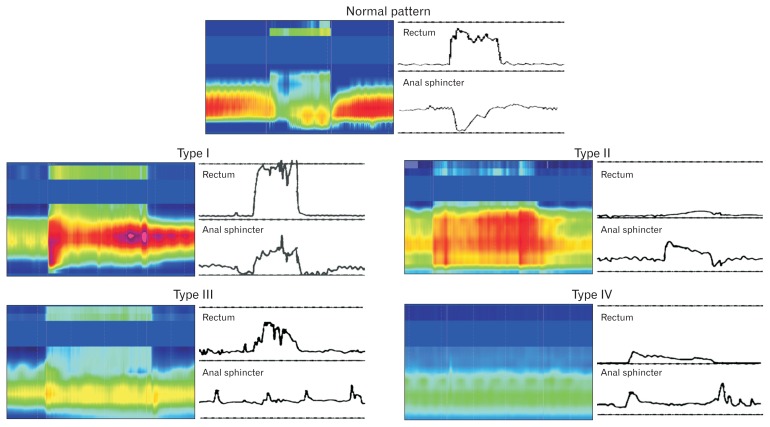Figure 1.
This series of conventional manometry and high-resolution manometry tracings reveals patterns that are commonly seen during attempted defecation in a healthy individual (top panel) and in patients with dyssynergic defecation. In a normal pattern of defecation, the subject can generate a good pushing force (increase in intra rectal pressure) and simultaneously relax the anal sphincter. In contrast, patients with dyssynergic defecation exhibit one of four abnormal patterns of defecation. In type I dyssynergia, the subject can generate an adequate propulsive force (rise in intra rectal pressure ≥ 40 mmHg) along with paradoxical increase in anal sphincter pressure. In type II dyssynergia, the subject is unable to generate an adequate propulsive force; additionally there is paradoxical anal contraction. In type III dyssynergia, the subject can generate an adequate propulsive force but there is either absent relaxation (a flat line) or inadequate (≤ 20%) relaxation of anal sphincter. In type IV dyssynergia, the subject is unable to generate an adequate propulsive force together with an absent or inadequate relaxation of anal sphincter.

